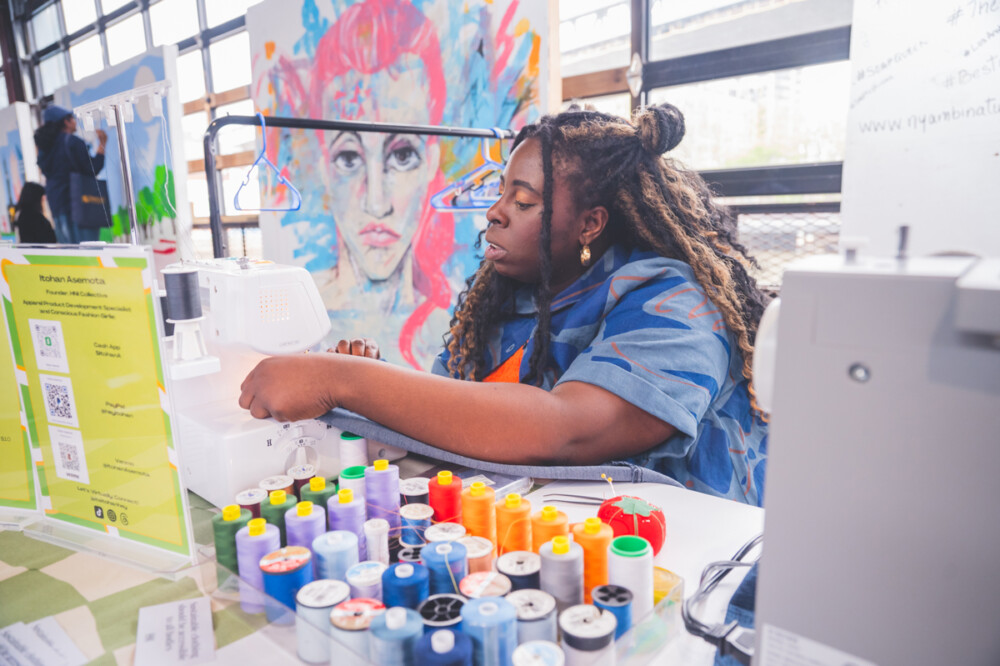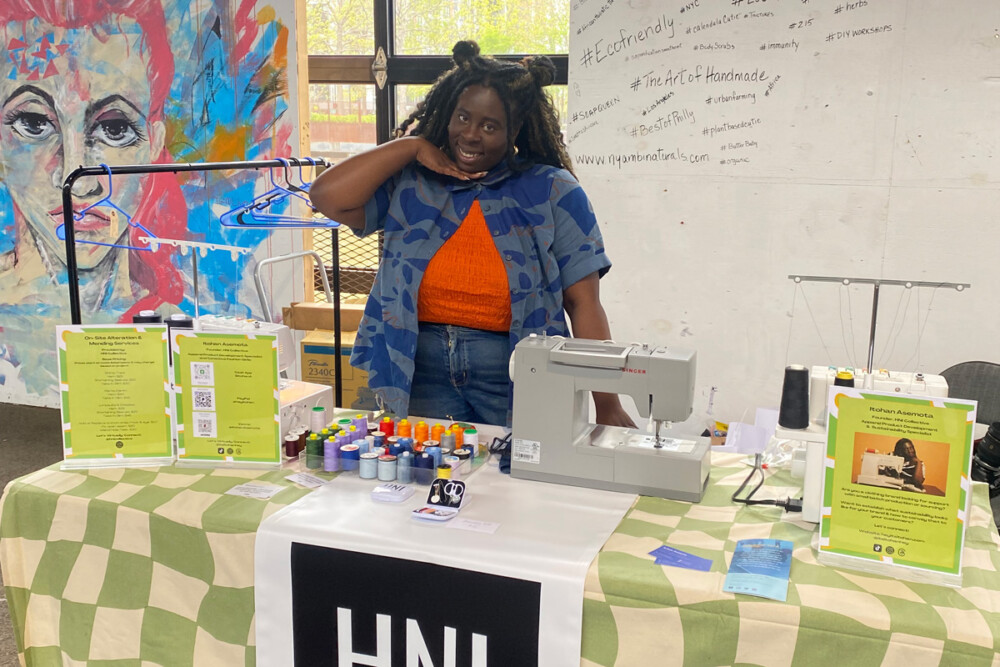
HNI Collective is Helping Philadelphians Embrace Slow Fashion, One Stitch at a Time
Over fast fashion? Here’s how to curate a closet that outlasts trends from Founder Itohan Asemota.
In some circles, wearing a decade-old shirt in public would be considered a fashion faux paw, but not to Itohan Asemota. Her biggest piece of fashion advice is don’t buy it, and that philosophy is woven into the fabric of her company.
Founded in January by Asemota, HNI Collective’s mission is to make sustainable clothing accessible to all bodies. Her approach is two-fold: help consumers make their clothes last longer while helping fashion brands be as sustainable as possible.

Since her 2017 Philadelphia University graduation, she’s advised local clothing brands and manufacturers– Showday Designs, Alice Alexander, and Grant Blvd– on implementing sustainable best practices, fabric and material sourcing, small batch production, and size inclusivity.
Meet People Where They Are
First, she will ask new clients to define sustainability and brainstorm what that looks like for their company. “Each brand is different. Some businesses may not realize they are already doing sustainable best practices,” explained Itohan.
“For some, that means buying natural fabrics (like linen or cotton) or ordering in low fabric quantities from local shops like Gaffney’s Fabrics or Fleishman’s Fabrics. To others, sustainability is reducing waste: ordering small quantities based on consumer’s interests or using deadstock material (materials people don’t need).”
Fast Fashion, Faster to the Landfill
Traveling at cheetah-like speeds – fast fashions go from design to retail rack in less than 15 days. Blink, and you’ll miss their entire lifespan – often lasting no more than 10 wearings.
Globally, between 80 and 100 billion new clothing garments are produced each year.
Recycling fabrics is not cost-effective and degrades fabric quality. Because of this, only one percent of garments are recycled into new clothing, while 87 percent of materials and fibers used in clothing production are incinerated or trashed.
What can consumers do to help lessen the load?
“Shop” From Your Closet
Before you add to the cart, look through your closet and ask yourself, “Do I actually need this?” If the answer is yes, start with secondhand sources for versatile items. Try thrift shops, clothing swaps, or Buy Nothing Groups.
Read the Label
Choose natural fibers like linen or cotton over synthetic fabrics (nylon, rayon, polyester, or a blend) whenever possible. During the wash and dry cycle, microplastics are shedded and enter the sewage systems and our waterways. According to the UN, an estimated half a million tons of these contaminants reach the ocean each year (the equivalent of 50 billion bottles).
Make It Last
“Being sustainable isn’t just throwing out your whole wardrobe to get a new sustainable one,” Itohan explained. “The average consumer just buys something new because they are replacing something worn out that they can’t wear in public. All the time – clients say they are obsessed with a pair of pants for two years, but they feel like they are supposed to throw them out.”
That’s how Ihotan began offering on-the-spot mending and alterations at markets. Mending means fixing things that break (think a tear, broken zipper, or lost button). Alterations make clothes fit better: hemming fabric that is too long, adding fabric to make it a lot longer, or buying a larger size and fixing it.
Don’t Be Afraid to Sew
“A little bit of tailoring goes a long way. I’m short and plus-sized. I’ve been alternating clothing since I was 15,” said Itohan. “It sounds scary if you’ve never sewn. To fix a tiny hole or reattach a button, all you need is a basic sewing kit.”
She hopes to have a permanent studio for mending appointments, client meetings, and teaching sewing classes in the future. In the meantime, she recommends Cut & Sew (Mount Airy), Made Institute (Center City & West Philly), Butcher’s Sew Shop (South Philly), or Sew + Sew (Cecil B. Moore Ave).
Get Clothing That Grows with Your Child
One study found that a third of parents throw their kid’s clothes in the trash because they don’t know what to do with it. That contributes to the 70 pounds of textiles that each person throws out a year. To extend the life of kids’ clothes, size up and buy clothing with an elastic waist.
Don’t Just Trash It
If you are getting rid of clothes that no longer fit you or your style, donate them to local charities (The Wardrobe) or a shelter. Retriever, Retold Recycling, Trashie, or Fabscrap will collect damaged clothing that can’t be upcycled.
Vote with Your Dollars
There is a wide gap between textile recycling and reusing products. “There is a need and demand for it, but larger companies don’t feel the need to fill that gap. A lot of the effort is done by startups or small companies.” To large companies, it is cheaper and easier to produce 10,000 units, knowing that you will sell 6,000 and trash the rest rather than produce fewer items. It matters where your money goes.
At the end of the day, HNI Collective wants one thing – “clients can have clothing that they love, without damaging the planet or people living in it.”
Photos: EcoFair 2024 by BeauMond Originals





